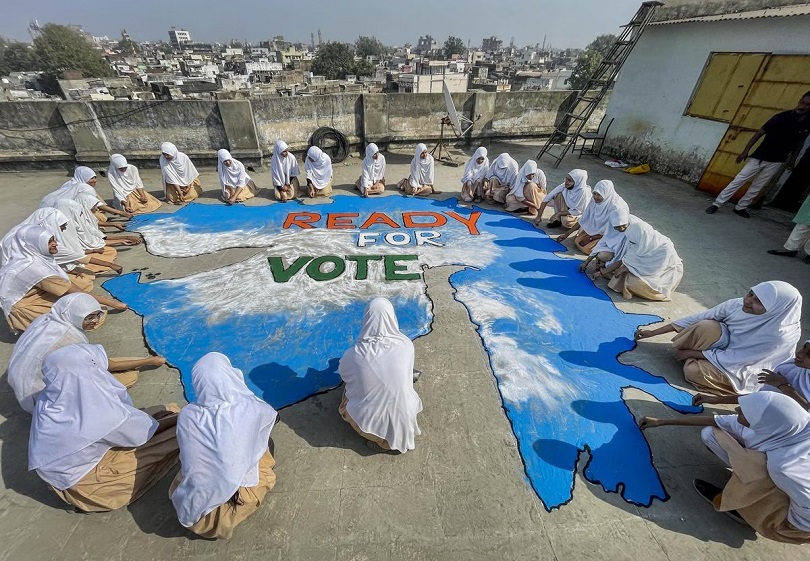
THE outcome of the Assembly elections in Gujarat and Himachal Pradesh and that of the MCD polls in Delhi has been a mixed bag: The BJP expectedly won Gujarat with a landslide majority, Congress surprisingly triumphed in Himachal and the AAP in Delhi. The scale of the BJP’s victory in Gujarat, securing 153 out of 180, has overshadowed those of the Congress and the AAP. The BJP even won the seat at Morbi where the bridge collapse in the run up to the polling day killed over 140 people. This has, once again, underlined for one and all the extent of entrenchment of the saffron party in the state, and for that matter, in many other parts of the country. And this makes the result of the 2024 general elections almost a foregone conclusion. The BJP could end up achieving a bigger win than it did in 2019.
However, the outcome of the ten Assembly polls scheduled to be held before the 2024 general elections will be equally important. Among them the elections in Karnataka, Chhattisgarh, Madhya Pradesh, Rajasthan and Telengana will be very crucial. The BJP will hope to win all of them. But should the party suffer reverses in the majority of these states, this may not bode well for its 2024 chances. The elections in these five major states represents the last chance for the opposition to hurtle back into the reckoning.
It appears, however, very unlikely that the BJP may not do well in the upcoming Assembly polls. Despite being in power for over eight years, the party remains untouched by anti-incumbency. So much so, that the governance issues seem to hardly matter as Morbi episode yet again demonstrates. The overarching political persona of the prime minister Narendra Modi seems to trump everything.. Either the Congress or the combined opposition are hardly in a position to mount a credible challenge to the BJP. Or so it seems.
Bihar chief minister Nitish Kumar’s attempt to unite opposition has so far met with a very little success. In the current climate, all parties want to go their own way. Congress has so drastically shrunk in recent years that it is struggling to retain its position as a national party. The AAP is trying hard to step into the breach. And it has achieved some significant success in this. The party already rules Delhi and Punjab and has made some inroads in Gujarat, qualifying it as a new national party.
But along the way, the AAP has become too ideologically-aligned with the BJP to be a seamless successor to the Congress. And this makes it more a threat to the BJP than the Congress in the long term. That is, if the AAP casts itself more in the BJP’s image. As of now, the AAP is showing a tendency to remain ideologically-ambivalent, veering towards either right or left according to its electoral convenience.
Though the Congress has also indulged in soft Hindutva, the drift of its politics has been by and large secular. But it is also true that in recent years the party has become apologetic about secularism, lest it be seen as Muslim appeasement in the country. With Rahul Gandhi’s padyatra, however, this may be changing. Congress has finally shown some assertiveness about pursuing an inclusive political agenda. Based on the public response to the yatra so far, the message seems to have had some impact, albeit its electoral implications are still uncertain For now, Congress can take heart from the victory in Himachal It can put some wind in its sails as it prepares for the Assembly elections next year. The party currently rules in Chhattisgarh, Himachal and Rajasthan. It remains to be seen whether the party retains Chhattisgarh, and Rajasthan. Its performance in Karntaka and Madhya Pradesh will be also keenly watched.
Together, the outcome of the Assembly polls will be a bellwether for 2024. In case the BJP suffers major reverses in the states, it could apparently face an uphill climb in the national election. But not necessarily. In the run up to the 2019 election, Congress had put up a stiff resistance to the BJP. In 2017 Assembly polls in Gujarat, the party secured 77 seats and subsequently won elections in Chhattisgarh, Madhya Pradesh and Rajasthan in 2018. As a result, the saffron party didn’t appear to be a favourite to win the general election. Most optimistic prediction was that the BJP would return with a reduced tally, forcing it to stitch together a coalition government, a throwback to the one run by the PM Modi’s predecessor Atal Bihari Vajpayee.
But then the Pulwama attack on February 14, 2019 changed everything. The military strike on Balakot that followed soon after and the consequent dog-fight hurtled the BJP back to the centre stage. The party swept to victory in the general election. So, going by the history of the past eight years, the reverses for the BJP don’t mean the party won’t come back stronger. As Yogi Berra famously said, it isn’t over until it is over. The saying snugly fits the politics of the BJP phenomenon in present India.
- Views expressed in the article are the author’s own and do not necessarily represent the editorial stance of Kashmir Observer
Follow this link to join our WhatsApp group: Join Now
Be Part of Quality Journalism |
Quality journalism takes a lot of time, money and hard work to produce and despite all the hardships we still do it. Our reporters and editors are working overtime in Kashmir and beyond to cover what you care about, break big stories, and expose injustices that can change lives. Today more people are reading Kashmir Observer than ever, but only a handful are paying while advertising revenues are falling fast. |
| ACT NOW |
| MONTHLY | Rs 100 | |
| YEARLY | Rs 1000 | |
| LIFETIME | Rs 10000 | |










